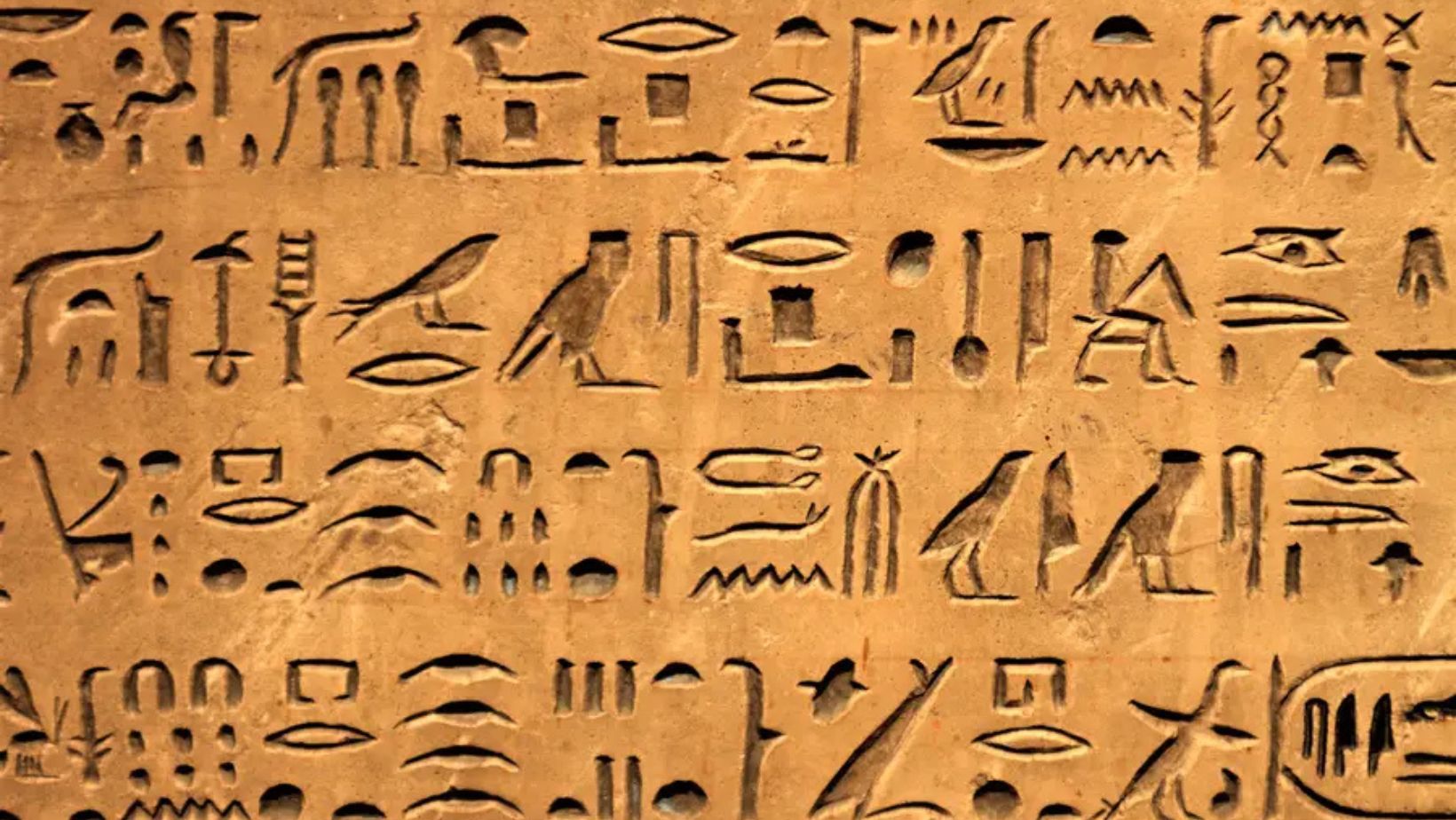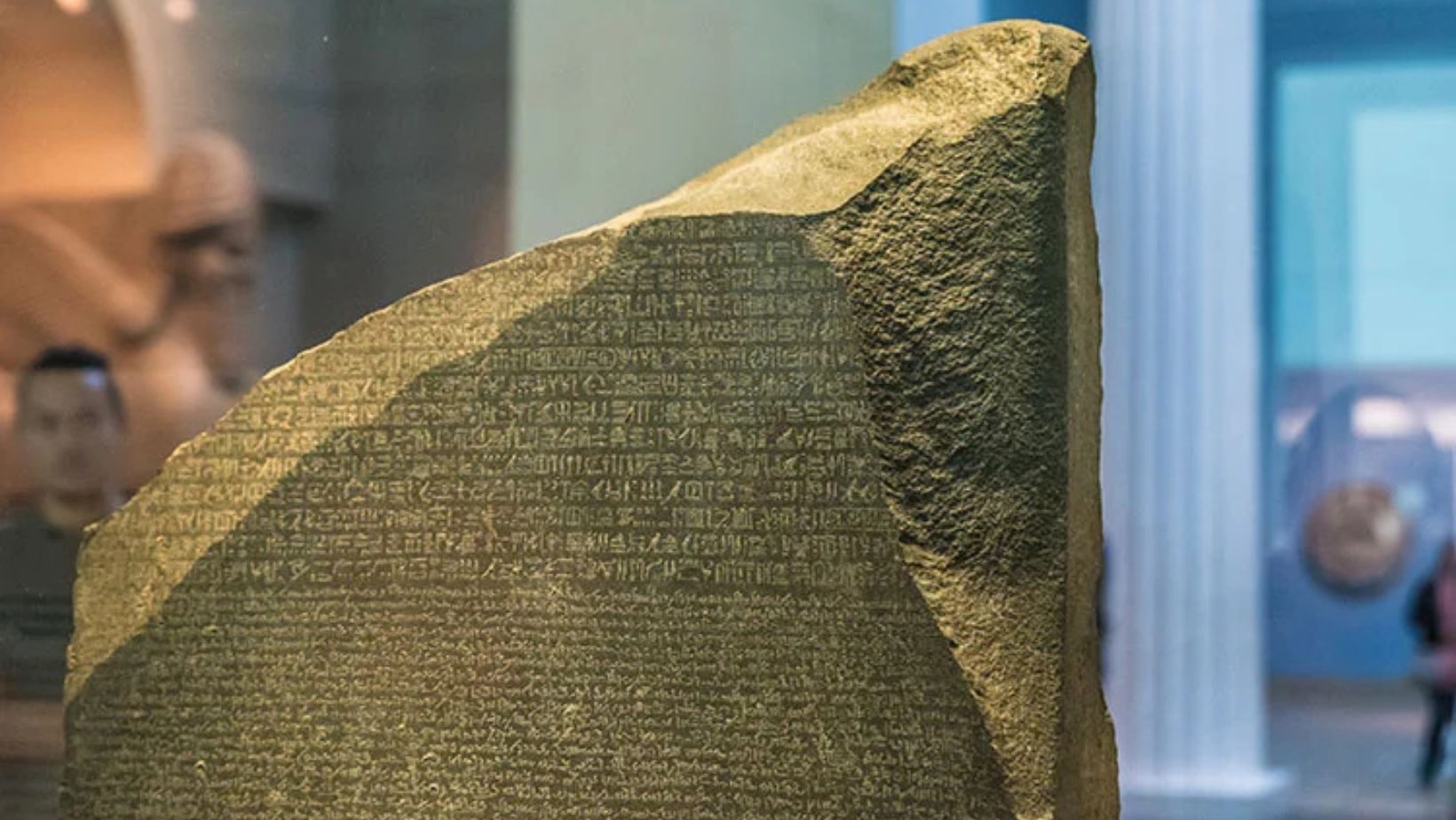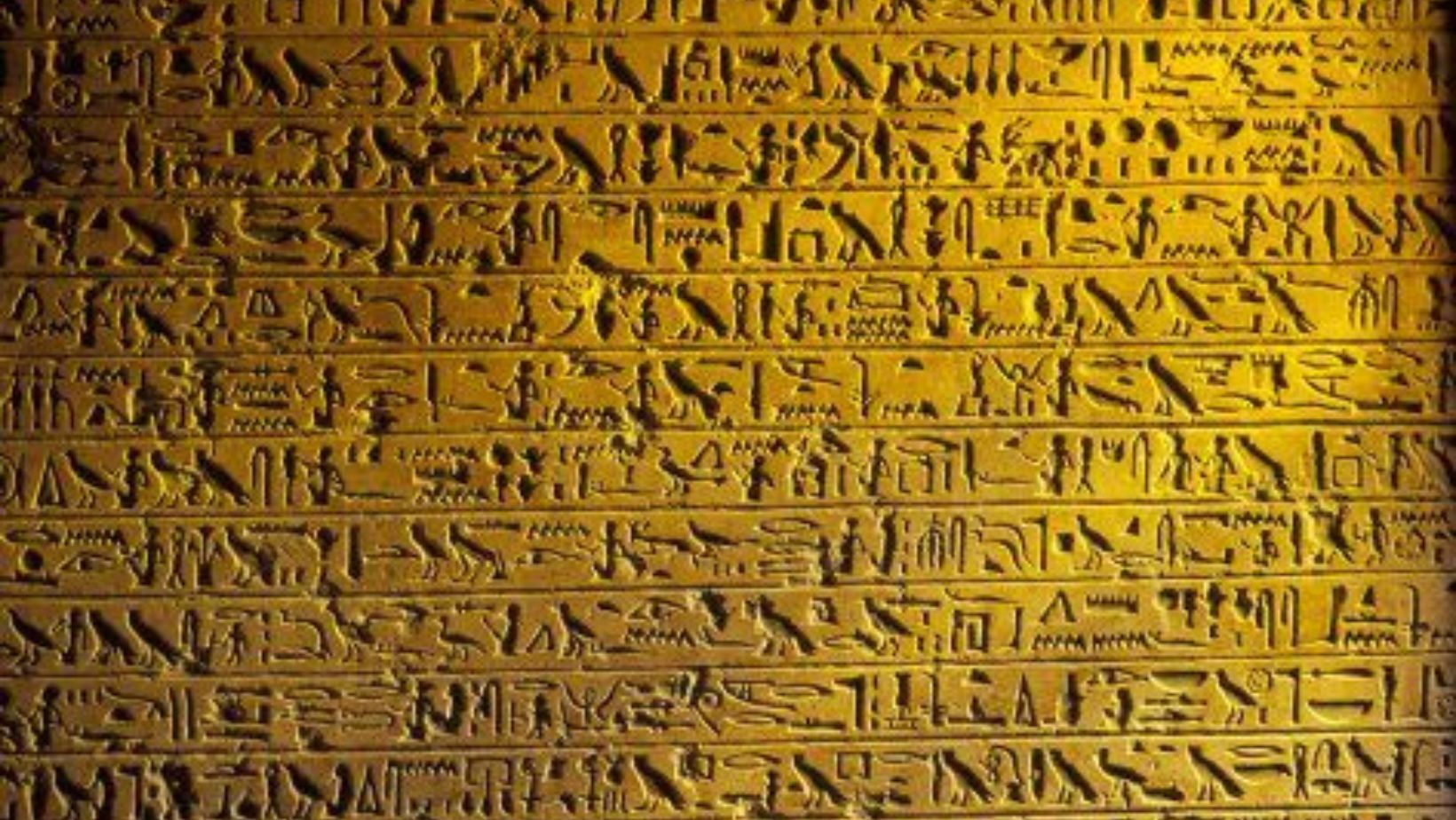Imagine a world where pictures tell stories, where every symbol holds a secret. Welcome to the fascinating realm of hieroglyphics! This ancient writing system was used by the Egyptians to communicate everything from everyday events to grand tales of the afterlife. Hieroglyphics combined images and sounds, making it a unique and expressive language. It played a crucial role in ancient Egyptian culture, helping to document history, religion, and administration. As we explore this remarkable script, you’ll discover how it shaped a civilization that continues to captivate our imagination today. Ready to unlock the secrets of the Pharaohs? Let’s dive in!
The Origins of Hieroglyphics
 emerged around 3100 BCE in ancient Egypt, marking a significant leap in communication. This writing system developed during a time when the Egyptian civilization was forming. The need for record-keeping and administration in growing cities led to the creation of a more complex form of writing. Hieroglyphics evolved from earlier pictorial symbols used by prehistoric Egyptians for various purposes.
emerged around 3100 BCE in ancient Egypt, marking a significant leap in communication. This writing system developed during a time when the Egyptian civilization was forming. The need for record-keeping and administration in growing cities led to the creation of a more complex form of writing. Hieroglyphics evolved from earlier pictorial symbols used by prehistoric Egyptians for various purposes.
Before hieroglyphics, Egyptians used simpler images to convey meaning. These early symbols were often scratched on pottery or carved on stones. Over time, these basic signs became more sophisticated, incorporating sound elements alongside visual symbols. Influences from other cultures, such as Mesopotamian cuneiform, also played a role in shaping hieroglyphic development.
Hieroglyphics combined logographic and phonetic elements, allowing for greater expression and complexity. This unique blend enabled scribes to record everything from royal decrees to religious texts. The system remained in use for thousands of years, demonstrating its adaptability and importance in Egyptian life. As a result, it became a vital tool in preserving the history and culture of one of the world’s earliest civilizations.
The Structure of Hieroglyphics
Hieroglyphics consists of over 700 distinct symbols, each with its own meaning. These symbols can represent sounds, words, or ideas, making the writing system highly versatile. The signs are categorized into three main types: phonetic, logographic, and determinative. Understanding these categories is essential to deciphering it.
Phonetic signs represent individual sounds or combinations of sounds, similar to letters in the alphabet. For example, a single symbol might represent the sound of the letter “s” or a syllable like “ma.” Logographic signs represent entire words or concepts, often drawn from everyday life, like animals or objects. These symbols create a visual connection to the meaning they convey.
Determinative signs help clarify the meaning of words by providing context. They are not pronounced but indicate the category of the preceding word, such as whether it is a person, place, or object. This structure allowed scribes to convey complex ideas clearly and efficiently. By combining these three types of signs, hieroglyphics formed a rich and expressive language that played a crucial role in ancient Egyptian communication.
Materials and Tools for Writing
The ancient Egyptians used various materials to write hieroglyphics, each suited for specific purposes. Papyrus was the most common writing surface, made from the pith of the papyrus plant. It was lightweight and portable, ideal for scrolls and administrative documents. For more permanent records, Egyptians carved its into stone, often seen in temples and tombs.
In addition to papyrus and stone, other materials were also utilized. Wooden tablets coated with a thin layer of plaster served as a reusable writing surface. This method allowed scribes to write and erase using a stylus. Scribes could also use leather for smaller, portable records.
Writing instruments played a crucial role in the creation of hieroglyphics. Scribes primarily used reed brushes or pens dipped in ink made from soot and water. They also employed styluses for engraving on harder surfaces like stone. The combination of these materials and tools enabled the effective communication of ideas and maintained the rich cultural heritage of ancient Egypt.
The Role of Rosetta Stone

The Rosetta Stone, discovered in 1799 by French soldiers in Egypt, was crucial for understanding hieroglyphics. This artifact features the same text written in three scripts: Greek, Demotic, and hieroglyphics. Because Greek was well understood, scholars could use it to unlock the meanings of the other two scripts. This made the Rosetta Stone a key to ancient Egyptian history and language.
Jean-François Champollion, a French scholar, played a vital role in deciphering it. He studied the Rosetta Stone for years, comparing the three scripts to identify patterns and meanings. In 1822, he announced his breakthrough, demonstrating that it represented both sounds and concepts. Champollion’s work opened the door to reading and understanding countless inscriptions across Egypt.
The significance of the Rosetta Stone goes beyond just deciphering hieroglyphics. It symbolizes the connection between ancient and modern cultures, bridging the gap between past and present. Today, it is housed in the British Museum, serving as a reminder of the power of language and the importance of preserving history. The efforts to decode hieroglyphics continue to inspire scholars and enthusiasts around the world.
Hieroglyphics in Religious Texts
Hieroglyphics played a crucial role in ancient Egyptian religious literature. One of the most famous examples is the Book of the Dead, a collection of spells and prayers intended to guide the deceased through the afterlife. These texts were often inscribed on papyrus scrolls and placed in tombs to assist the departed in their journey. The use of hieroglyphics allowed for a deep connection between the living and the divine.
In addition to the Book of the Dead, it adorned tomb walls and burial chambers. Inscriptions often included prayers, hymns, and spells to protect and honor the deceased. These carvings served both a decorative and functional purpose, ensuring safe passage to the afterlife. The elaborate rituals performed during burials emphasized the importance of these texts in securing favor from the gods.
Moreover, hieroglyphics were essential in temples, where they recorded the deeds of pharaohs and offerings to deities. This not only preserved religious practices but also reinforced the divine right of rulers. By inscribing these sacred texts, ancient Egyptians aimed to achieve eternal life and maintain a connection with their gods, demonstrating the profound significance of it in their spiritual beliefs.
Hieroglyphics and Daily Life
Hieroglyphics were not limited to religious texts; they also played a vital role in daily life in ancient Egypt. Scribes used it for administrative purposes, keeping records of trade, taxes, and inventory. This made it essential for the functioning of the economy and governance. Hieroglyphics appeared on various everyday objects, including pottery, tools, and furniture, often denoting ownership or purpose.
In homes, it were inscribed on amulets and personal items for protection and good fortune. Families might engrave their names or significant dates to commemorate important events. These inscriptions connected individuals to their culture and heritage, emphasizing the importance of writing in personal and social identity.
Temples also featured it prominently, detailing the achievements of pharaohs and the gods they worshipped. Walls often displayed scenes of religious rituals alongside inscriptions that conveyed messages of devotion and piety. By intertwining their daily lives with it, ancient Egyptians ensured that their history, beliefs, and values were preserved for future generations. This integration highlights the significance of writing as both a practical tool and a cultural cornerstone in ancient Egyptian society.
Cultural Significance of Hieroglyphics
Hieroglyphics played a vital role in preserving the history and culture of ancient Egypt. This writing system recorded important events, religious beliefs, and daily life, providing valuable insights into the civilization. By documenting everything from royal decrees to everyday transactions, its became a key to understanding ancient Egyptian society. It ensured that their legacy would be remembered by future generations.
Beyond their practical use, it also held significant artistic value. The intricate designs and colorful depictions transformed writing into a form of art. Each symbol was carefully crafted, often accompanied by detailed illustrations that enhanced their meaning. This combination of text and imagery made it visually captivating and culturally rich.
Moreover, it symbolized the connection between the divine and the earthly. They were often used in temples and tombs, bridging the gap between gods and humans. This sacred aspect of it reinforced their importance in rituals and daily life. As a result, hieroglyphics not only served as a means of communication but also as a powerful symbol of identity, spirituality, and artistic expression in ancient Egyptian culture.
The Decline of Hieroglyphics
The decline of hieroglyphics began around the 4th century CE, largely due to social and political changes in Egypt. As the Roman Empire expanded, Egypt became less isolated, leading to increased cultural influences from other regions. This shift diminished the importance of traditional Egyptian practices, including it. Additionally, the rise of Christianity in Egypt introduced new religious texts that did not utilize hieroglyphics.
The transition to the Coptic writing system marked a significant turning point. Coptic, derived from Greek, became the primary script for Christian texts in Egypt. It was simpler and more accessible for everyday use, making it more appealing than the complex hieroglyphics. As literacy in Coptic grew, fewer people learned it.
The arrival of the Arabic language in the 7th century further accelerated this decline. Arabic quickly became the dominant language for administration and trade. As a result, it were gradually replaced by Coptic and Arabic scripts. By the end of the 12th century, it had mostly fallen out of use, transforming from a vital means of communication to a relic of Egypt’s ancient past.
Modern Interpretations and Legacy

Hieroglyphics have left a lasting impact on modern languages and writing systems. Many contemporary scripts, particularly in the realms of art and design, draw inspiration from the intricate symbols of ancient Egypt. This influence can be seen in everything from decorative fonts to logos that incorporate hieroglyphic elements. Additionally, some modern languages have borrowed words and concepts from ancient Egyptian, enriching their vocabulary and cultural references.
Current research in Egyptology continues to uncover new insights about its. Scholars are using advanced technologies, such as imaging and scanning, to examine ancient texts that were previously unreadable. These discoveries are shedding light on forgotten histories and expanding our understanding of ancient Egyptian society. Furthermore, interdisciplinary studies are combining linguistics, archaeology, and history to provide a more comprehensive view of it and their significance.
The legacy of it is also evident in popular culture. Movies, literature, and art often reference these ancient symbols, sparking public interest in Egypt’s rich history. As a result, it remain a powerful symbol of Egypt’s cultural heritage, inspiring curiosity and admiration in people worldwide. This fascination ensures that the study of it will continue to thrive in both academic and cultural contexts.
Conclusion: Hieroglyphics
Hieroglyphics are essential for understanding ancient Egypt’s history, culture, and beliefs. They serve as a window into the civilization’s daily life, religious practices, and administrative functions. The intricate symbols reveal the values and experiences of a society that thrived for thousands of years. Today, the fascination with Egyptian hieroglyphs endures, capturing the imagination of scholars and enthusiasts alike. Ongoing research continues to unlock the secrets of these ancient symbols, ensuring that their legacy remains vibrant. As we explore it, we deepen our appreciation for the rich tapestry of human history and the cultures that shaped our world.
FAQs
What were the primary purposes of hieroglyphics in ancient Egypt?
Hieroglyphics served multiple purposes, including religious inscriptions, administrative record-keeping, and documentation of historical events. They were used in tombs, temples, and everyday objects to convey messages and preserve cultural identity.
How many symbols are there in the hieroglyphic writing system?
The hieroglyphic writing system consists of over 700 symbols. These symbols represent sounds, ideas, and objects, making the system both complex and versatile.
Were hieroglyphics used exclusively by priests and scribes?
While priests and scribes were the primary users of hieroglyphics, educated individuals from various social classes could also learn to read and write them. However, literacy in hieroglyphics was relatively rare among the general population.
How did hieroglyphics influence modern Egypt?
Hieroglyphics continue to influence modern Egypt by inspiring cultural pride and national identity. They are celebrated in art, architecture, and tourism, reflecting the country’s rich heritage.
Are there any similarities between hieroglyphics and other ancient writing systems?
Yes, there are similarities between hieroglyphics and other ancient writing systems, such as cuneiform and Chinese characters. All three systems use symbols to represent sounds and meanings, highlighting the shared human effort to communicate through written language.

